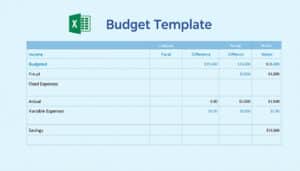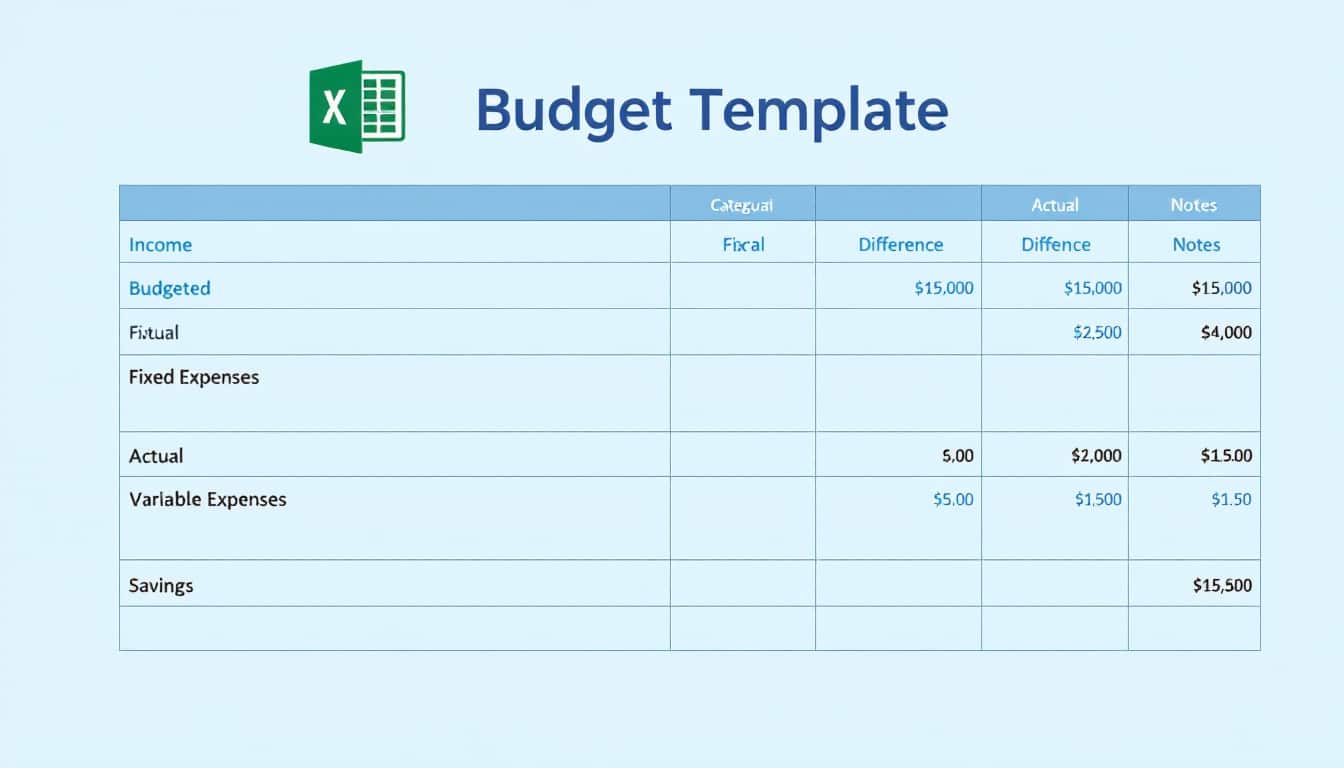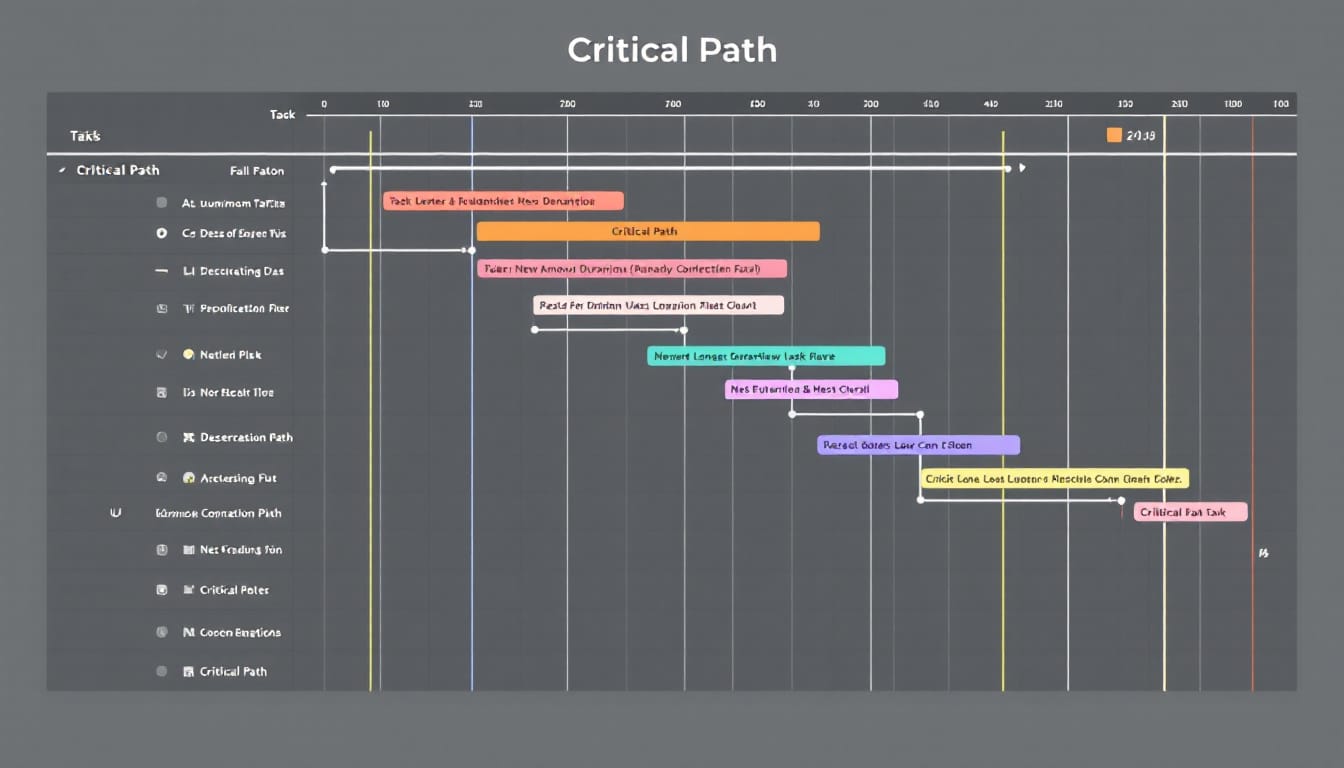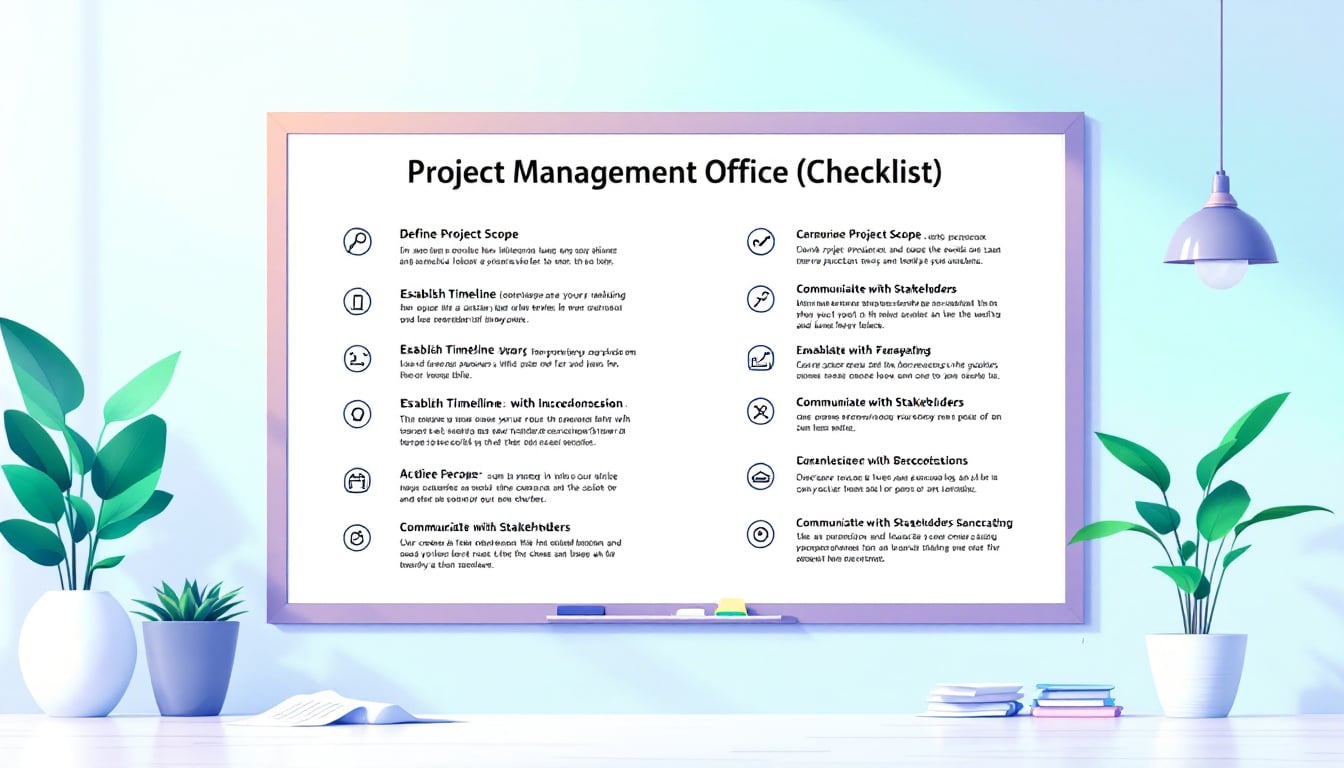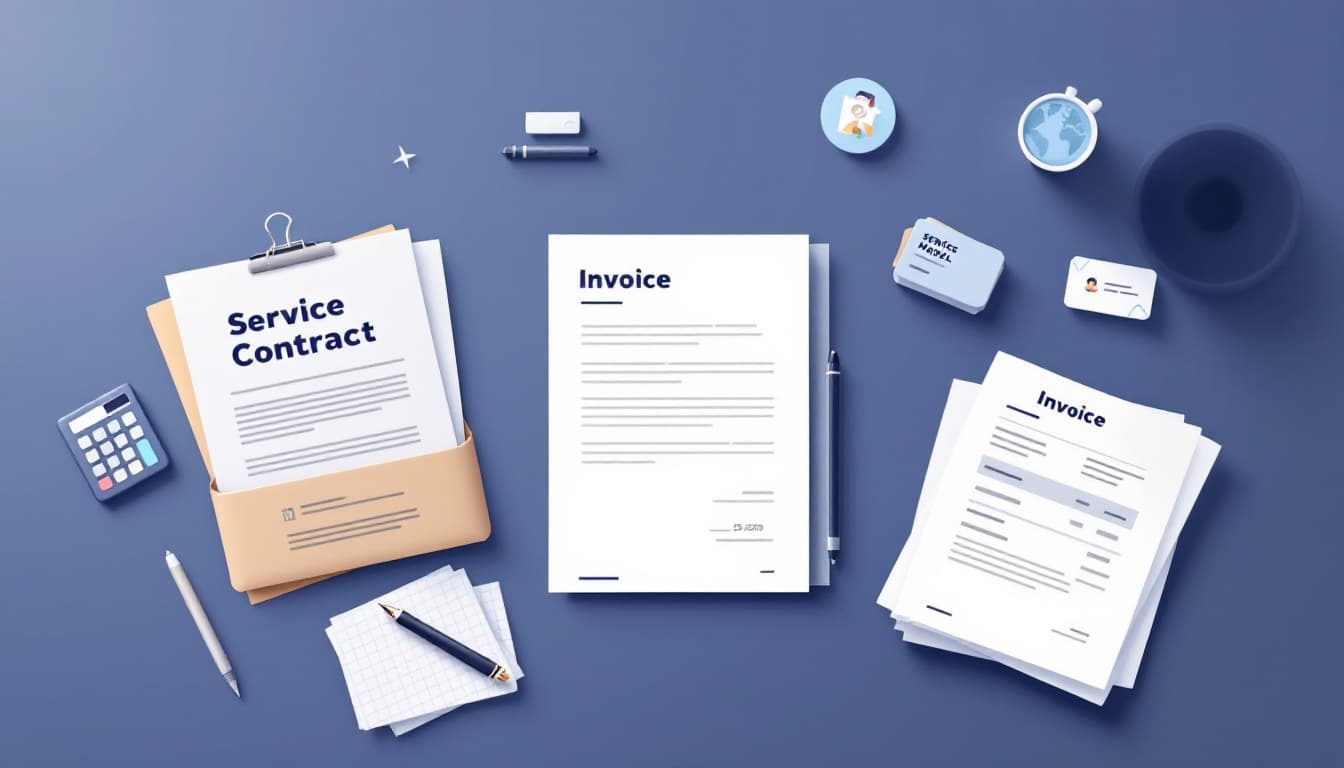Managing a project can seem daunting at first glance. Whether you are an experienced project manager or were randomly assigned, mastering the basics is essential. Each step, although complex, contributes to the overall success.
Navigating the intricacies of project management requires a structured and creative approach. By breaking down the process into clear steps, you can transform ambitious ideas into tangible achievements. Here’s how to orchestrate each phase to ensure the success of your projects.
🔥 Nous recommandons Ideamap
Ideamap est l’outil idéal pour un brainstorming ou un projet collaboratif. Grâce son interface facile et à ses fonctions IA, Ideamap booste votre créativité tout en favorisant une meilleure organisation de vos idées pour atteindre vos objectifs.
-
Define the project objectives and goals
Establishing clear objectives is the cornerstone of effective project management. This step ensures a common understanding among all stakeholders and guides decisions throughout the project. Start by identifying the main purpose of the project using the SMART method (specific, measurable, achievable, relevant, and time-based). Make sure to involve clients, team members, and leaders to align objectives with business expectations and needs. Recording these objectives in a project charter or scope statement facilitates clarity and commitment from all participants.
-
Identify stakeholders and plan their engagement
Stakeholders are all individuals or groups interested in or affected by the project. Identifying them early allows for enhanced communication and collaboration. Developing a stakeholder engagement plan includes choosing preferred communication methods, designating responsible parties, and scheduling interaction frequency. Managing expectations by being clear about scope, deliverables, and deadlines reduces conflicts and improves decision-making.
-
Create a work breakdown structure to define project scope
The work breakdown structure (WBS) allows you to break the project down into smaller, manageable components. This ensures effective planning and optimal resource allocation. By visualizing the entire project, managers can avoid scope creep and ensure that all project elements align with the defined objectives.
-
Develop a project schedule
A detailed project schedule serves as a roadmap for completing tasks, milestones, and deadlines. Methods such as the Critical Path Method (CPM) and Program Evaluation and Review Technique (PERT) help identify critical tasks and realistically estimate durations. Gantt charts provide a visual view of timelines and dependencies, facilitating resource management and team coordination.
-
Define project resource requirements
Identifying the necessary resources — human, material, financial, and technological — is crucial to ensure the smooth progression of the project. Efficient resource allocation avoids shortages and budget overruns while enhancing task execution and risk management.
-
Estimate costs and develop a project budget
Cost estimation and creating a structured budget help control expenses and ensure the project’s financial feasibility. By categorizing direct, indirect, and contingency costs, and utilizing various estimation methods, you can organize funds in alignment with objectives and financial constraints.
-
Identify potential risks and define mitigation strategies
Risk management involves identifying, analyzing, and responding to potential risks that may affect the project. By using a risk matrix, you can classify and prioritize risks, then develop strategies to eliminate, reduce, transfer, or accept them, thus ensuring smooth execution without major interruptions.
-
Acquire project resources from suppliers
Sourcing the necessary resources from external suppliers should be well planned to ensure quality, timeliness, and cost-effectiveness. This includes defining needs, researching potential suppliers, negotiating contracts, and monitoring supplier performance.
-
Assemble a project team and commence execution
Forming a competent team and clearly defining roles and responsibilities ensures effective collaboration and shared accountability. Project execution involves implementing the established plan, ensuring that each task is completed according to the goals and deadlines set.
-
Use project tracking software to monitor execution
A project tracking software allows real-time monitoring of progress, identifying risks, and ensuring that the project remains aligned with the budget and quality standards. These tools provide instant visibility into key metrics, facilitating informed decision-making and team adaptability.
-
Use free project management templates
For those not ready to invest in project management software, free templates can be a viable solution. Tools such as project plans, budgets, and dashboards can help organize and track essential elements without additional costs.
ProjectManager is an award-winning project and portfolio management software that simplifies planning and scheduling with multiple views, such as Gantt charts, Kanban boards, and task lists. With its advanced features, teams can allocate resources, track usage, and monitor time, costs, and progress through real-time dashboards. Join the many teams who use ProjectManager to deliver successful projects today.

Define the project objectives and goals
When you embark on successfully managing a project, the crucial first step is to clearly define the objectives and goals of the project. This solid foundation ensures that all stakeholders have a common understanding of what the project aims to achieve. To do this, it is essential to identify the main purpose of the project and break it down into SMART objectives: specific, measurable, achievable, relevant, and time-bound.
Start by clarifying the project’s purpose. For example, if you are launching a new product, your main objective might be to increase market share by 10% by the end of the year. Then, break this objective down into concrete steps, such as conducting market research, developing the product, and implementing an effective marketing campaign. This distinction between objectives and goals allows for more precise planning and execution.
It is also crucial to involve clients, team members, and leaders from the outset to ensure that objectives align with stakeholder expectations and business needs. Recording these objectives in a project charter or scope statement and sharing them with the team promotes clarity, accountability, and commitment from all. This approach minimizes the risk of project drift and facilitates task prioritization and resource allocation.
To deepen this step, you can consult the 5 phases of project management, which provide a structured framework to define and achieve your objectives. By adopting a rigorous method from the start, you lay the solid foundations necessary for project success.
Identify stakeholders and plan their engagement
The success of a project largely depends on how well you identify and engage the stakeholders. Stakeholders include all individuals, groups, or organizations that have an interest in or are affected by the project. Early identification and planning of their engagement ensure smooth communication, effective collaboration, and overall project success.
Stakeholders can be internal, such as project sponsors, team members, management, and other departments, or external, like clients, suppliers, regulators, and investors. It is essential to categorize them based on their influence and interest in the project. This categorization helps determine the most appropriate engagement strategies for each group.
Once stakeholders are identified, establish a stakeholder engagement plan. This plan should include the preferred communication methods for each group (meetings, progress reports, emails, etc.), the individuals responsible for communication, and the frequency of exchanges. For example, some stakeholders may prefer weekly updates, while others may be satisfied with monthly reports.
Managing stakeholder expectations by clarifying the project scope, deliverables, and deadlines is fundamental. Address concerns proactively to maintain trust and remain flexible by adjusting engagement strategies based on feedback. This ensures alignment of objectives, reduces conflicts and misunderstandings, improves decision-making, and secures necessary buy-in and support.
To learn more about communication with stakeholders, you can explore the use of a decision-making flowchart in project management.
Create a work breakdown structure to define project scope
Once the objectives are defined and stakeholders identified, it’s time to define the project scope using a work breakdown structure (WBS). The WBS is an essential tool that breaks the project down into smaller, manageable components, ensuring clarity, accountability, and effective planning.
By using a WBS, project managers can visualize the entire project, allocate resources efficiently, and set realistic deadlines. This is particularly important to avoid scope creep and ensure that all project elements align with the defined objectives.
The WBS identifies all essential tasks, deliverables, milestones, and dependencies. For example, if you are managing a construction project, the WBS might include specific actions like site preparation, foundation construction, structure installation, and final finishes. Each task should be clearly defined, assigned, and measurable.
For more detailed management, you can consult a comprehensive guide on construction project management. The WBS not only helps prevent unforeseen events but also ensures better coordination among different teams and phases of the project.
Additionally, the WBS facilitates resource allocation and allows for better control of deadlines and costs. By accurately breaking down tasks, it becomes easier to identify dependencies and organize work logically, thus optimizing workflow and ensuring smooth project execution.
Establish a project schedule
A detailed project schedule is essential for successfully managing a project. It serves as a roadmap, highlighting all the activities, tasks, milestones, and deadlines of the project. A well-established schedule ensures that the project is completed within the allotted time and meets the defined scope while helping teams stay focused and organized.
When establishing the schedule, it is crucial to include task assignments, estimated durations, task dependencies, milestones, and a resource allocation. This approach not only organizes the project but also identifies potential delays and risks early on. For example, if a key task is delayed, it may impact the entire project schedule.
Several methods and tools can assist you in creating an effective schedule:
Critical Path Method (CPM)
This method identifies the longest sequence of dependent tasks, thus determining the minimum duration necessary to complete the project. It helps prioritize critical tasks to avoid potential delays.
Program Evaluation and Review Technique (PERT)
The PERT method uses optimistic, pessimistic, and most likely estimates to calculate task durations. It is particularly useful for projects with significant uncertainty in task durations.
Project Network Diagrams
These diagrams provide a visual representation of project tasks and their dependencies. They help identify bottlenecks and sequence tasks for smooth execution.
Gantt Charts
Gantt charts are bar graphs that visually map tasks over a timeline. They show start and end dates of tasks, dependencies, and progress, thereby facilitating deadline tracking and resource allocation.
Using project management software, like ProjectManager, can significantly improve the efficiency of the management process by integrating powerful Gantt charts that plan tasks, resources, and costs.
Define required project resources
To effectively manage a project, it is essential to accurately define the necessary resources. This encompasses human, material, financial, and technological resources essential for the project’s success. Rigorous identification and allocation of these resources ensure smooth progress, deadline adherence, and budget maintenance.
Human resources include team members, their skills, and availability. Material resources may include equipment, software, and other tools required for task execution. Regarding financial resources, it is crucial to prepare a detailed budget that covers all anticipated and potential expenses.
Effective resource management allows for optimal use and avoids shortages or overloads. For example, if a key resource is unavailable at a critical time, it may delay the entire project. Similarly, poor allocation of financial resources can lead to budget overruns.
To better understand the impact of resource management, check examples of feasibility reports in project management. These reports offer templates and practical examples to effectively plan and allocate resources.
Resource planning should also include strategies for managing unforeseen events, such as creating reserves for additional resources or adapting in case of changes in the project. Good resource management is an essential pillar for avoiding delays, controlling costs, and ensuring the quality of deliverables.
Estimate costs and establish a project budget
The estimation of costs and the establishment of a project budget are crucial steps to successfully manage a project. A well-defined budget enables control of expenses, ensures financial efficiency, and guarantees project feasibility. This begins with identifying different cost categories, including direct costs, indirect costs, and contingencies.
Direct costs are directly tied to project execution, such as salaries of team members, materials, and equipment. Indirect costs include general expenses that support the project, such as administrative fees and utilities. Contingencies represent a budget reserve intended to cover unforeseen events or last-minute changes.
Several cost estimation methods can be used:
Analogous Method
Based on data from previous similar projects, this method allows for cost estimation by referencing past experiences.
Parametric Method
This method uses statistical formulas based on project size and complexity to predict costs.
Bottom-Up Method
This involves breaking down each project task into individual costs and summing them to obtain the total cost.
Three-Point Method
This method combines optimistic, pessimistic, and most likely estimates to obtain a more accurate cost estimation.
Once costs are estimated, develop a structured budget by organizing expenses in a detailed financial plan. Ensure that the budget aligns with project objectives and available financial resources. Distribute budgeted funds across different phases of the project life cycle and allocate a contingency reserve for unforeseen expenses.
It is essential to monitor and track expenses throughout the project to avoid budget overruns. Using financial management tools and budget templates, such as those available in ProjectManager, can facilitate this task and ensure rigorous financial management.
Identify potential project risks and define mitigation strategies
In project management, identifying risks and defining mitigation strategies are essential for anticipating and minimizing negative impacts on the project. Risks can arise from various sources, such as budget constraints, resource shortages, technological failures, conflicts among stakeholders, or external factors like regulatory changes.
A proactive approach to risk management begins with brainstorming sessions, reviewing historical data, and using a risk breakdown structure. Once risks are identified, they should be analyzed and prioritized based on their likelihood of occurrence and potential impact on the project. A risk matrix can help classify risks into priority levels: low, moderate, high, or critical.
For each identified risk, develop an appropriate mitigation strategy. This may include:
- Eliminating the risk by modifying or abandoning the task or project component causing it.
- Reducing the likelihood or impact of the risk by implementing preventive measures.
- Transferring the risk to another party, for example, by subcontracting a task to a specialized vendor.
- Accepting the risk and developing a contingency plan to address it if necessary.
Effective risk management helps prevent delays and additional costs, while improving decision-making through proactive planning. It also strengthens stakeholder confidence, which is crucial for project success.
To deepen your knowledge in risk management, consult examples of feasibility reports that include detailed risk analyses and mitigation strategies.
Source project resources from suppliers
Once the necessary resources are identified, the next step is to source these resources from suppliers. Procurement management involves selecting, negotiating, and managing relationships with suppliers or external vendors who will provide the necessary resources for project completion.
Start by defining your procurement needs, specifying the types of resources, the quantities needed, and the delivery timelines. Then research to identify potential suppliers who can meet your quality, cost, and reliability requirements.
Request quotes and detailed proposals from selected suppliers. Compare these proposals considering not only costs but also delivery timelines, payment terms, and guarantees offered. An effective negotiation of contracts is essential to obtain the best possible terms while ensuring quality and timely deliveries.
Once suppliers are chosen, ensure to closely monitor their performance and adherence to delivery timelines. Use clear contracts that define expectations, responsibilities, and performance criteria. Regular communication with suppliers can help anticipate and promptly resolve any potential issues.
Strong supplier management helps minimize the risks of delays and additional costs while ensuring that the necessary resources are available when you need them. To learn more about procurement management, explore a comprehensive guide to construction project management, which discusses best practices in procurement and supplier management.
Form a project team and begin execution
Building a competent project team is a decisive step for the success of the project. A well-structured and engaged team ensures effective collaboration, clear accountability, and smooth project execution.
Start by defining roles and responsibilities within the team using tools like the RACI matrix (Responsible, Accountable, Consulted, Informed). This clarifies who is responsible for each task, who is in charge, who needs to be consulted, and who should be informed of progress.
Next, select and integrate team members based on their skills, experience, and specific project needs. During onboarding, explain in detail the objectives, expectations, and responsibilities of each member. Provide the necessary tools, resources, and training for them to perform their tasks effectively.
Organize regular meetings and establish collaboration processes to maintain smooth communication and optimal coordination. Use collaborative platforms and project management tools to facilitate information sharing and progress tracking.
Once the team is in place, start project execution by implementing the project plan and assigning the defined tasks. Ensure to meet deadlines and maintain the quality of deliverables by constantly monitoring progress and adjusting strategies as necessary.
To deepen your knowledge of team formation and management, consult the 5 phases of project management, which offer practical advice for structuring and effectively leading your team.
Use project tracking software to monitor project execution
To successfully manage a project, it is essential to continuously track and monitor project execution. Using a project tracking software facilitates this task by providing real-time visibility into progress, costs, risks, and project performance.
A project tracking software centralizes all relevant information, automates task tracking, and generates detailed reports. This enhances accountability and communication within the team, while enabling project managers to make informed decisions based on accurate data.
Key features of good project tracking software include:
- Real-time visibility: Allows tracking of task progress, quickly identifying delays, and readjusting plans if necessary.
- Customizable dashboards: Provide an overview of key performance indicators, such as time, cost, and workload.
- Resource management: Facilitates the allocation and tracking of human and material resources, avoiding overloads or underutilization.
- Team collaboration: Enables team members to share files, comment on tasks, and stay informed about updates.
- Integrations with other tools: Ensures compatibility with commonly used applications, such as calendars, communication tools, and accounting software.
An example of an efficient software is ProjectManager, recognized for its robust Gantt charts, Kanban boards, and task lists. These tools allow flexible and efficient project planning and tracking while providing complete visibility to stakeholders.
For those not ready to invest in tracking software, there are free project management templates available on various sites. These templates can serve as a temporary alternative to organize and track tasks, although they may lack the dynamics and efficiency of dedicated software solutions.
In summary, using project tracking software is a major asset for ensuring proactive and reactive management, guaranteeing that your project remains on track, within budget, and achieves its final objectives.
Use project management tools and techniques
To successfully manage a project, it is essential to leverage various project management tools and techniques. These tools facilitate planning, execution, tracking, and controlling projects while enhancing collaboration and communication within the team.
One of the most popular tools is the Gantt chart, which helps visualize project tasks and their deadlines over a timeline. Kanban boards are also highly appreciated for their simplicity and effectiveness in managing workflows by limiting the number of tasks in progress.
Agile methods, such as Scrum and Kanban, offer a flexible and iterative approach to project management, promoting adaptability and responsiveness to changes.
Furthermore, techniques like the RACI Matrix clarify the roles and responsibilities of each team member, ensuring better coordination and avoiding misunderstandings.
Online collaboration tools, such as Slack, Trello, or Asana, facilitate real-time communication and information sharing, which is particularly important for distributed teams or those working remotely.
To deepen your knowledge on project management tools and techniques, consult this article that details best practices and the most effective tools to optimize your project management.
Monitor progress and adapt the project plan
Once the project is underway, it is crucial to continuously monitor its progress and adapt the plan based on needs and any obstacles encountered. This monitoring ensures that the project remains aligned with its objectives, meets deadlines, and stays within budget limits.
Using a project tracking software facilitates this process by providing real-time updates, alerts about potential delays, and key performance indicators. Regular analysis of the collected data allows project managers to make informed decisions and react quickly to changes.
For instance, if a specific task takes longer than expected, it may be necessary to reallocate resources or readjust priorities. Similarly, if identified risks materialize, mitigation measures can be implemented to minimize their impact.
It is also important to reassess project objectives and priorities at regular intervals. This ensures that the project remains relevant to the organization’s strategic objectives and may require adjustments in response to new opportunities or unforeseen challenges.
To maximize the effectiveness of monitoring and adaptation, it may be helpful to hold regular progress meetings with the team and stakeholders. These meetings provide a platform to discuss progress, identify issues, and collaborate on solutions.
Ultimately, the ability to monitor progress and adapt the project plan distinguishes successful projects from others. This proactive and flexible approach allows responding to changes and keeping the project on track for success.
Ensure the quality of deliverables
The quality of deliverables is a determining factor for successfully managing a project. Ensuring that the products or services delivered meet stakeholder expectations and established standards is essential for client satisfaction and the reputation of the project team.
To ensure quality, it is important to integrate quality control processes throughout the project lifecycle. This includes defining clear quality criteria from the outset, conducting regular inspections, and using quality assurance techniques such as audits and project reviews.
Proactive involvement of team members in quality processes helps identify and resolve issues as they arise, before they impact the final deliverables. For example, regular testing may be performed on a developing product to ensure it meets specifications and client requirements.
Utilizing standards and best practices in project management also enhances the quality of deliverables. Adopting proven methodologies, such as ISO standards or project management frameworks like PMI, provides a solid structure for quality management.
Moreover, involving stakeholders in the review and validation process of deliverables ensures that final products meet their expectations. Regular and constructive feedback allows adjustments to deliverables in real time, thus ensuring continuous compliance with project requirements.
To deepen your understanding of the importance of quality in project management, explore the basics of project management, which cover in detail essential quality management and assurance techniques for the success of your projects.
Manage communications and maintain transparency
Effective communication and total transparency are essential for successfully managing a project. Good communication ensures that all stakeholders are informed of progress, changes, and challenges encountered throughout the project.
To establish effective communication, define from the outset a communication plan that specifies the channels, frequency, and content of exchanges. Use modern communication tools, such as instant messaging platforms, project management software, and file sharing systems, to facilitate collaboration and real-time information sharing.
It is also crucial to maintain transparency by regularly sharing updates on project progress, successes, and challenges. This fosters a culture of trust and accountability, where every team member feels involved and informed.
Organize regular meetings, such as stand-up meetings or project retrospectives, to discuss progress, identify obstacles, and adjust strategies if necessary. Encouraging active participation and constructive feedback allows for quick problem resolution and continuous process improvement.
Transparency and open communication also serve to manage stakeholder expectations and avoid misunderstandings. By sharing key information and being clear about objectives and deadlines, you reduce the risk of confusion and frustration.
To learn more about the importance of communication in project management, consult methods and tools in project management that detail best practices to ensure smooth and effective communication.
Finally, encourage a culture of transparency within your team by valuing openness and honesty. This not only strengthens interpersonal relationships but also creates an environment where issues can be identified and resolved quickly, thus contributing to the overall success of the project.
Close the project and evaluate results
The closure of the project is a final yet essential step in successfully managing a project. This phase involves finalizing all project activities, delivering the final deliverables, and evaluating the results against the initial objectives.
Begin by confirming that all project tasks and obligations are completed. Ensure that all deliverables have been accepted by stakeholders and that quality criteria have been met. This may include final testing, inspections, and formal approvals.
Once the deliverables are completed, create a project closure report that documents the results, successes, and lessons learned. This report is valuable for future projects as it helps identify what worked well and what could be improved.
Organize a closure meeting with the project team and stakeholders to discuss the project’s performance, challenges encountered, and successes achieved. This discussion fosters collective learning and reinforces best practices for future projects.
Reevaluating objectives and results measures project success and identifies gaps between expectations and actual results. This helps assess the effectiveness of the project management strategies adopted and adjust methods for future projects.
Finally, archiving project documents is an important step to ensure that all relevant information is retained for future reference. This includes project plans, tracking reports, contracts with suppliers, and closure reports.
To better understand the project closure process, consult feasibility report templates that can be adapted to document and evaluate the results of your projects.
#>



